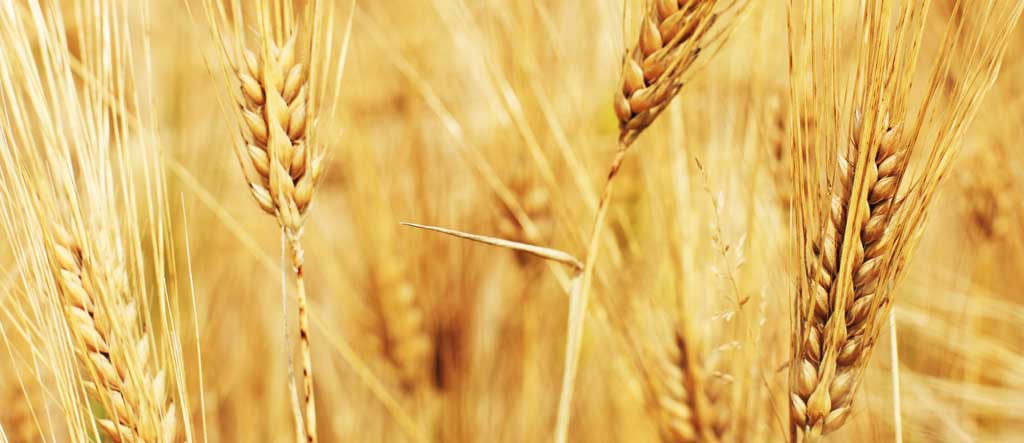
Barley is a highly nutritious cereal grain that was a staple food in the diet of our ancestors. Nowadays, we mostly encounter it in soups or beer. However, its nutty flavour and chewy texture makes it a great addition to salads and a delicious alternative to rice and pasta. It is highly versatile and easy to incorporate into many recipes, including veggie loaf or burgers, risottos or as a breakfast cereal.
Like other whole grains, barley offers many health benefits with the potential to help improve cardiovascular health, insulin resistance, digestive health and strengthen the musculoskeletal system.
A recent study from Lund University in Sweden shows that barley can rapidly improve people’s health by reducing blood sugar levels and the risk for diabetes. The secret lies in the special mixture of dietary fibres found in barley, which can also help reduce people’s appetite and risk for cardiovascular disease. ¹
Barley Nutrition
Barley contains both soluble and insoluble fibre, vitamins, minerals, protein and many beneficial phytochemicals.
- Phosphorus
- Potassium
- Magnesium
- Manganese
- Molybdenum
- Chromium
- Selenium
- Calcium
- Zinc
- Iron
- B vitamins
- Vitamin E
- Vitamin K
The Health Benefits of Barley
Barley contains about 10% protein and is high in dietary fibre, which helps us to feel fuller for longer. Improving metabolism and reducing appetite.
Dietary fibre cleanses the colon, feeds friendly bacteria and helps to promote bowel movements, offering relief for both diarrhoea and constipation.
It is high in beta-glucan, a soluble fibre that feeds the good bacteria in the gut. Feeding the good bacteria helps to reduce the bad bacteria.
Barley is a good food to help prevent or better manage Type 2 Diabetes as it has a low Glycaemic Index, which means it slows down the release of sugars to assist blood glucose control and improve insulin response.
Regularly eating barley has been shown to reduce cholesterol, which reduces the risk of cardiovascular disease.
Increasing soluble fiber through consumption of barley in a healthy diet can reduce cardiovascular risk factors.²
Eating three portions of whole grains a day has been shown to help lower blood pressure, due to the fibre and nutrients in the bran and germ. Barley is high in potassium, which can help to reduce blood pressure by reducing the effects of sodium.
Barley’s antioxidants and phytochemicals help reduce inflammation. It is a good source of selenium and vitamin E providing beneficial antioxidant effects that are essential for tissue repair and the immune system.
Barley contains good amounts of Magnesium which is essential for blood pressure regulation, blood sugar control, and muscle and nerve function.
β-glucan slows stomach emptying to create a feeling of fullness, lowers cholesterol, and prevents a fast rise in blood sugar after eating. These properties make β-glucan beneficial in the fight against obesity, cardiovascular disease and diabetes.³
Pot and Pearl Barley and Flakes
Barley is most widely available as pot or pearl barley, as well as hulled barley and barley flakes. Pot and pearl barley go through a pearling machine which polishes the hull off the grain; with pearl barley receiving the longer polishing time.
Hulled barley: This is the whole grain with just the outer inedible husk (hull) removed, leaving most of the bran layer, and all of the inner germ and endosperm layers intact. It requires longer soaking and cooking times but is the least processed and so retains the most nutrition.
Pot barley: The outer hull, which is the bran layer, is removed with a minimum amount of polishing leaving most of the inner germ layer intact. Traditionally, it was boiled in one-pot dishes such as soups and stews.
Pearl barley: The outermost hull and most of the germ layer are removed. With fine pearl barley some of the inner endosperm layer is also polished off resulting in a greater loss of nutrients. It is often used in savoury risottos and baked sweet barley pudding.
Barley flakes: These are similar to rolled oats and can be used in much the same way.
If you have never tried barley or you have not had it in a while, now is a good time to re-discover how tasty and versatile this very affordable grain is.
Bibliography
Nancy P. Ames, Camille R. Rhymer; Issues Surrounding Health Claims for Barley, The Journal of Nutrition, Volume 138, Issue 6, 1 June 2008, Pages 1237S–1243S, https://doi.org/10.1093/jn/138.6.1237S
References:
(1) Barley helps improve blood sugar levels, reduce appetite. Online article. Available at: https://www.sciencedaily.com/releases/2016/02/160209090716.htm (Accessed 27/09/2018)
(2) S Behall KM, Scholfield DJ, Hallfrisch J. Lipids significantly reduced by diets containing barley in moderately hypercholesterolemic men. Online article. Available at: https://www.ncbi.nlm.nih.gov/pubmed/14963054 (Accessed 28/09/2018)
(3) Health and nutritional information. Online article. Available at: https://gobarley.com/health-nutrition/ (Accessed: 05/09/2018)

